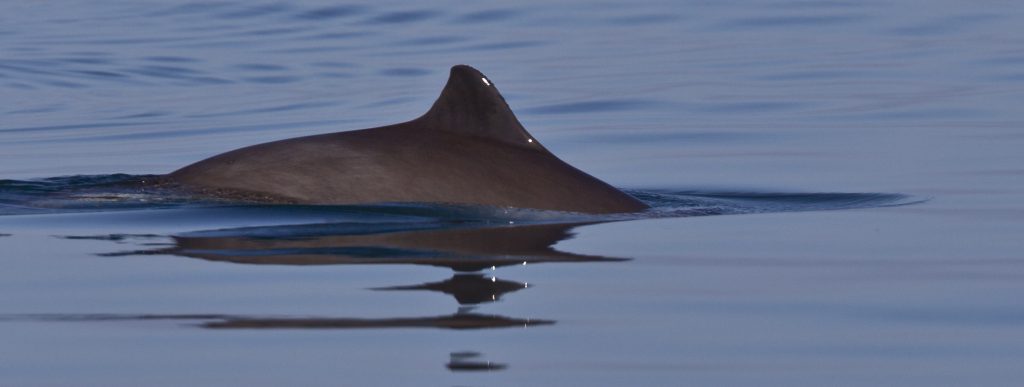On behalf of the Swedish Agency for Marine and Water Management AquaBiota wrote a response to Favonius’s appeal to the Land and Environmental Court regarding the application for permission for construction and operation of wind farms in Kattegatt, Falkenberg municipality (case 6960-14). AquaBiota’s response was focused on harbour porpoise (Phocoena phocoena).

Summary of the report
In Germany, the Federal Ministry for the Environment, Nature Conservation, Building and Nuclear Safety (BMUB) has drafted a concept for protecting porpoises from noise exposure in the construction of offshore wind power in the southern North Sea. Based on scientific knowledge of how porpoises are affected by underwater noise from piling, BMUB has established a double limit: SEL must not exceed 160 dB re 1 re 1 μPa2 s or SPLpeak-peak must not exceed 190 dB re 1 re 1 μPa at 750 m distance from the source of the noise. The limit first reached must be applied. A review of measured noise levels generated by piling and how much noise mitigation that can be obtained by different methods shows that this limit cannot be achieved by today’s technology. BMUB concludes that today it is not possible to grant permission for the construction of offshore wind power within the German economic zone in the southern North Sea
Based on the logistical correlation between noise levels measured at the piling of eleven different wind farms or other marine structures, the sound exposure level (SEL) when piling at Kattegatt Offshore is estimated to be in the order of 176 – 178 dB re 1 μPa2 s at 750 m distance if monopile foundations with a diameter at 6 – 7 m are used. With two alternative safety margins based on the noise levels of the eleven different constructions, the worst scenario for Kattegatt Offshore is expected to be SEL 181 – 184 dB re 1 μPa2 s. With today’s methods for noise mitigation of piling, 7-13 dB re 1 re μPa2 s noise reduction can be expected, given that the practical application of the method works. For Kattegatt Offshore, this means a worst scenario with attenuation of a sound exposure level of 168 – 177 dB re 1 μPa2 s. This is 8 – 17 dB above the limit set by BMUB. When piling wind farms in the southern North Sea, porpoises have been observed to decrease sharply or completely disappear within a radius of 20 km or more. The entire construction period has a negative impact. At 50 km distances, porpoise density has been observed to increase, indicating that escaping porpoises move 50 km from the piling zone. No observations have been made at longer distances so the far limit for relocations is unknown.
The distribution of porpoises is closely linked to areas with high productivity. These areas are believed to be particularly important for adult females, and thus the survival of the entire population. Adult females have extraordinary energy requirements as they are basically always pregnant and / or suckling calves. The calves feed for 8 – 10 months and are for the major part of this period completely dependent on the proximity of their mother to their survival. If piling is carried out at Kattegatt Offshore, calves behavior are expected to be affected in the important area around Stora Middelgrund. On average over the year, this area is estimated to inhabit about 7% of all adult females in the Kattegatt-Belt-southwest Baltic Sea population. The population is classified as vulnerable (VU) in the Swedish Red List, has a maximum growth potential of 4 – 9.4 % and has not shown any signs of recovery during the period 1994 – 2012. Overall, it is estimated that Kattegatt Offshore piling will be at a high risk of excessive negative impact on population level in the Kattegatt-Belt-Southwest Baltic Sea. There are alternatives to piling as well as other foundation types that are believed to generate lower levels of underwater noise. Out of these, gravitational foundations are most tested and in two of three studies no impact on porpoise has been detected.
Report (in Swedish):
Carlström, J. 2014: Påverkan av Kattegatt Offshore på tumlare. AquaBiota Report 2014:06 rev. 34 sid.